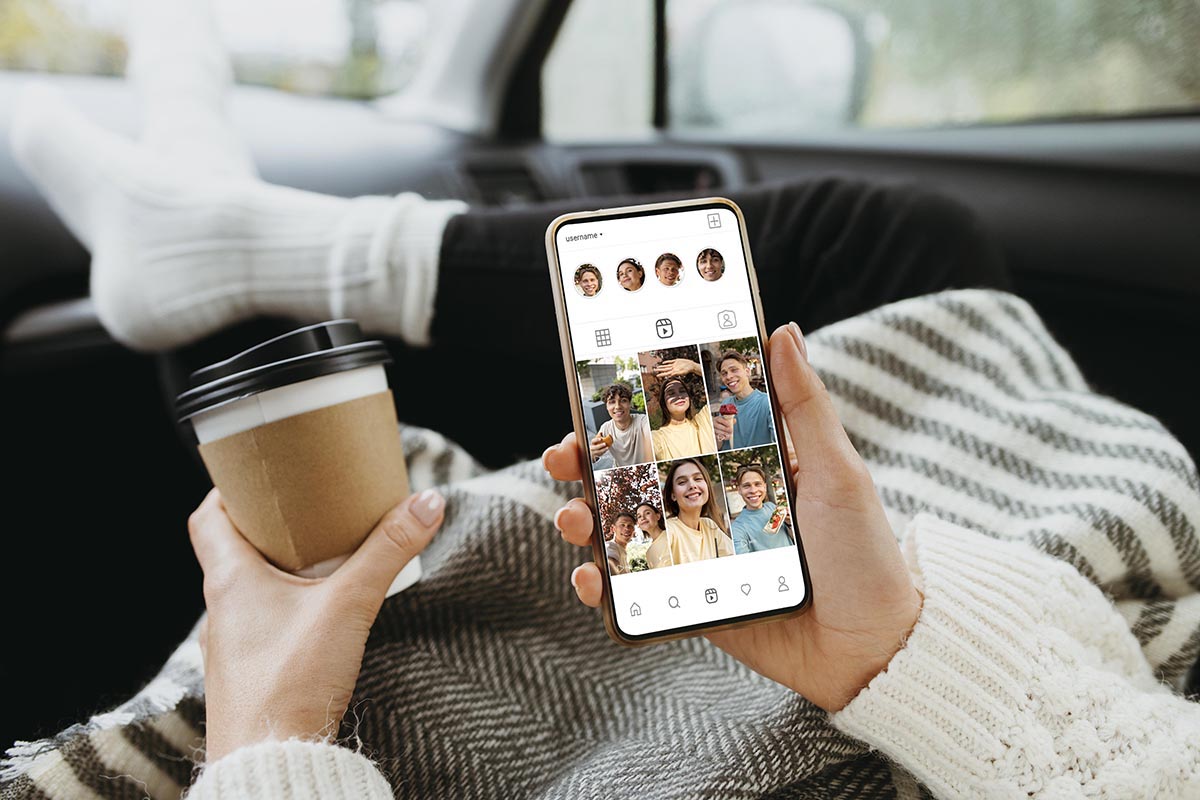AI Gear Tracking: How AI and QR Codes Redefine Gear Organization
✨Key Takeaways
- AI and QR codes simplify tracking. You can catalog your gear visually by snapping photos and attaching QR labels.
- Visual organization beats spreadsheets. Seeing what you own helps you recall, locate, and manage items faster than scrolling through text-based lists.
- Creators and small businesses save time.AI gear tracking helps creators and small businesses save time. Photo-based systems like Scanlily make storage, sharing, and collaboration easier and stress-free.
Every leap in knowledge has a defining tool. For early accountants, it was the ledger book.
For office managers of the 1980s, it was Excel.
And for a long time, spreadsheets were nothing short of magic.
They gave ordinary people the power to make sense of chaos.
From CEOs juggling quarterly reports to creators organizing camera gear, spreadsheets made everyone feel like a data wizard. But the same tool that gave us control slowly started demanding it back.
We now spend more time formatting than thinking, naming files “Finally_Final_Revised_Revision.xlsx” and color-coding cells just to stay sane.
Spreadsheets gave us structure, but not simplicity.
And somewhere along the way, we started using them for things they were never built for: tracking physical stuff, personal projects, even hobbies.
You don’t need a pivot table to manage your gear or a VLOOKUP to remember where your mic is stored. You’re not a data analyst.
For years, creators tolerated this friction because there wasn’t a better option.
But now there is, and it lives in your camera — AI gear tracking that turns photos into instant, organized inventories without the spreadsheet stress.
The AI Shift
Artificial intelligence isn’t just about LLMs, robots, and futuristic headlines.
At its simplest, AI gear tracking can now recognize, describe, and organize what it sees — turning a quick photo into a smart, searchable inventory.
Pair that with something as simple as a QR code, and you get a new kind of system; one that bridges your physical world with your digital one.
Instead of typing out “Canon EF 50mm Lens – Case 3 – Shelf B,” you take a quick photo of the contents inside your storage box.
The AI automatically identifies what it sees: “Camera lens, batteries, charger.”
You stick a QR label on that box. Next time you scan it, the app shows you the photo and a list of items inside.
No typing. No formula errors. No guesswork.
Tools like Scanlily make this process seamless. You just pack, snap, label, and go.
The app uses AI to describe what it sees, links that info to a QR sticker, and stores it in your personal cloud-based inventory.
In essence, you’re building a searchable photo catalog of everything you own.
And unlike spreadsheets, this system grows naturally with your workflow.
Whether you’re adding new gear, packing for a shoot, or managing a small store’s inventory, the visual record stays consistent and accessible from anywhere.
Real-World Example: The Photographer Who Finally Stopped Losing Lens Caps
Meet Derek, a freelance photographer in Delaware.
Before switching to an AI-based system, he tracked all his gear on a spreadsheet. It had columns for item name, value, purchase date, and storage location.
It looked organized, but when a client called for a same-day shoot, he could never find what he needed fast enough.
He once spent forty-five minutes looking for a light stand that was technically listed under “Equipment Drawer B,” except it wasn’t there.
It was at home, hidden behind a curtain after his last studio session.
When Derek tried Scanlily, he started by photographing his main gear cases.
The AI auto-listed the visible items.
He added short notes like “Lens cap x2, SD cards in small pouch.”
Then he printed QR labels for each case.
Now, before every shoot, he simply scans the labels and sees the contents right on his phone.
He can also share access with his assistant so they can pack faster and double-check items before leaving.
With AI gear tracking, the process becomes effortless — every item is visually logged, searchable, and shareable in seconds.
The system didn’t just make him more organized.
It made him calmer, more professional, and more present in his creative work.
A Step-by-Step Guide on Setting Up
If you’re ready to stop guessing where things are, here’s how to set up your own smart system:
- Gather and group your gear. Start with one category, like “camera equipment” or “art supplies.” Don’t try to organize your entire workspace in one day. Grouping by function helps the AI identify items more accurately.
- Label your containers. Use durable QR stickers that can handle handling, dust, or light exposure. Each label acts as a unique identifier for a box, case, or shelf.
- Snap clear photos. Open the app and photograph the contents of each box before sealing it. You can take multiple angles for clarity. The AI uses these photos to auto-describe the contents.
- Let the AI work. It will automatically list recognizable items. You can add quick notes for anything specific, like a model number, warranty info, or replacement cost.
- Link the QR label. Attach the sticker and link it to the digital record for that box. From that point on, scanning the QR code pulls up its contents instantly.
- Reuse and update as needed. Each time you move, repack, or replace an item, just take a new photo. No need to start from scratch or open a spreadsheet.
- Make it collaborative. If you work with a team or assistant, share access. They can scan and check contents in real time, reducing confusion and saving time.
Within a few hours, you’ll have a living, visual inventory that updates itself as your workflow evolves.
Why It Works
Our brains are wired for visual recall. You might not remember an item’s name or location, but you’ll instantly recognize it when you see it.
That’s why photo-based inventories are so effective.
A text-only list makes you think harder. You’re forcing your brain to decode abstract data.
But an image triggers instant recognition and emotional context.
You remember when you bought it, how it feels, and where it usually sits.
That’s also why losing something small, like a cable or adapter, feels disproportionately stressful.
The object itself isn’t valuable, but the mental energy wasted searching for it is.
By visualizing what you own, you reduce cognitive load. You make fewer redundant purchases, avoid duplicates, and spend more time actually creating.
Beyond Gear: How Small Businesses Can Use This
The same logic applies to any small business that deals with physical items.
- Shop owners can track stock, display materials, and packaging supplies without needing POS-integrated inventory software.
- Event planners can catalog decorations, props, or lighting equipment for different clients.
- Podcasters and musicians can track microphones, cables, and portable mixers.
- Artists can document prints, canvases, and framing materials.
- Freelancers can manage project materials or document storage for tax season.
In all these cases, spreadsheets quickly become messy.
One forgotten update can throw off your entire record. But with a visual inventory, the process feels natural because you see what’s real, not what’s recorded.
The barrier to entry is also much lower.
You don’t need an accountant’s brain or a data analyst’s patience: just your phone camera, a set of labels, and a few minutes to photograph your setup.
The ROI is Astronomical
Once you switch to a visual system, everything changes. You stop digging through boxes or toggling between multiple “final” versions of your inventory file.
You know where everything is. You unpack faster. You can even share your inventory with clients, assistants, or movers so everyone stays aligned.
The mental clarity is real. Because when your storage is handled, your mind can focus on true creativity and execution instead of control and correction.
It’s also a matter of professional trust.
When clients see that you can locate and account for your gear within seconds, they see reliability. That’s credibility built on organization.
For business owners, the benefit is scalability.
As your inventory grows, you don’t add more stress; you just add more photos — the same mindset that applies when learning how to sell photography on Etsy: the more organized and transparent your process, the easier it is to build customer trust and grow.
Conclusion
The real problem was never disorganization. It was memory.
Boxes and cabinets hide things. Spreadsheets try to compensate but end up hiding information in their own way.
With tools like Scanlily, technology has finally caught up with how our brains actually work.
You can stop second-guessing what’s in Box 7 or where that missing microphone went.
You just scan, check, and move on with your day — freeing more time to focus on creativity and applying the best practices to market your freelance photography business, not managing messy spreadsheets
Spreadsheets had a great run. They taught us how to measure, plan, and think in systems. But for the modern creator or small business owner, the next leap is already here.
Your phone camera isn’t just for Snapchat anymore. It’s your new inventory assistant.
So pack smart, snap often, and let the machines remember for you.
You have better things to do, like creating.




















